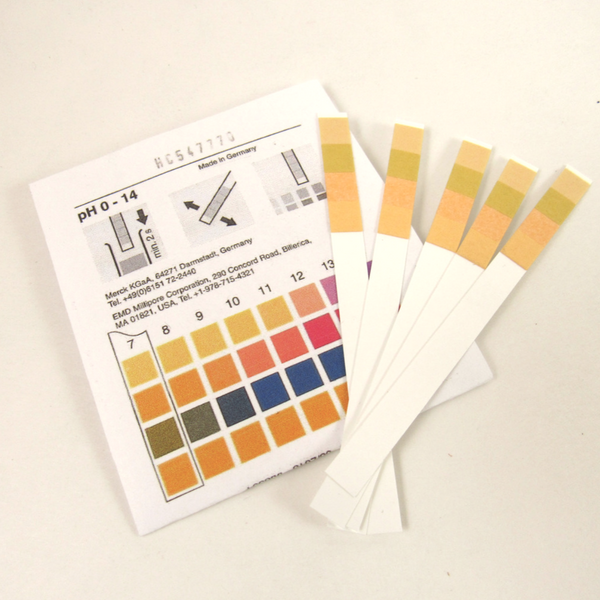This week: Substantive dyes and checking the pH of your vat
Every week, we are emailed with questions from our natural dye community asking simple and complex questions that we thought might be worth sharing. Of course, all of your burning questions are answered by natural dyer in chief, Kathy Hattori, Founder of Botanical Colors.
I have questions about tannic dyes like walnut, lichen, and other substantive dyes. What is it that makes a substantive dye work on protein fibers if it’s not the built in tannic or other acids?
So, I’m not anywhere near a chemist in my training, but my understanding is that the chemical structure of the protein fiber has ions that are available for bonding and the ions in substantive dyes are also available so they bond. The use of a mordant can help increase the ionic bond in some cases, and in others, is not as necessary.
I have used citric acid while dyeing some stuff and it’s reacted with the dye creating pink shades onto the fabric. When I washed the fabric on a gentle wash, it’s like it reversed the process and the fabric came out without the pink colors – went back to how it was before adding the citric acid.
Is there a way to have the citric acid reaction stay more permanently on the fabric with washing?
Citric acid lowers the pH of the dye bath and can cause color shifts to pH sensititive dyes, and washing with soap raises the pH of the laundry bath – from acidic to neutral or slightly basic. If the citric acid color effect occurred because it shifted a color, then raising the pH through washing would neutralize the effect that the citric acid changed. I am a little cautious when using acids to shift shades, as it’s always a good idea to consider how the textile will be used and if laundering might cause changes to the piece.
Learn more here on:
Shop:

